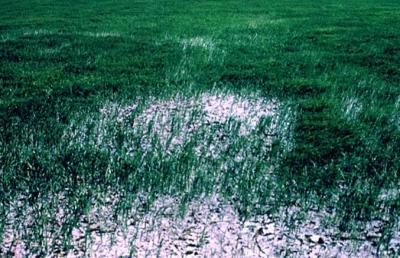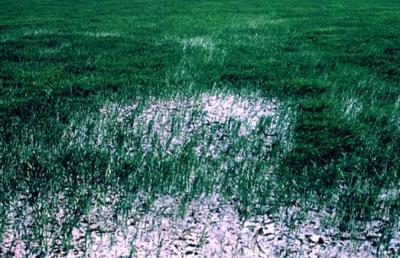


Rice root-knot nematode (Meloidogyne graminicola)
Symptoms consist of characteristic hooked-like galls on roots, newly emerged leaves appear distorted and crinkled along the margins, and infested plants are stunted and yellow. Heavily infested plants flower and mature early. The rice root-knot nematode is a damaging parasite on upland, lowland and deepwater rice. It is well adapted to flooded conditions and can survive in waterlogged soil as eggs in egg-masses or as juveniles for long periods.
Numbers of nematodes decline rapidly after 4 months but some egg masses can remain viable for at least 14 months in waterlogged soil. This root-knot nematode can also survive in soil flooded to a depth of one m for at least 5 months. It cannot invade rice in flooded conditions but quickly invades when infested soils are drained. It can survive in roots of infected plants. It prefers soil moisture of 32%. It develops best in moisture of 20% to 30% and soil dryness at rice tillering and panicle initiation. Its population increases with the growth of susceptible rice plants.
- Practise crop rotation with crops that are resistant or poor hosts of the rice root-knot nematode (e.g. castor, cauliflowers, cowpea, common beans, groundnut, maize, onion, sesame, soybeans, sunflower and sweet potatoes). Long rotations, greater than 12 months, will be needed to reduce nematode soil populations to low levels. Rotation crops like marigold (Tagetes sp.) are also effective in lowering root knot nematode populations because of its nematicidal properties.
- Amend soil. Experiments with organic soil amendments such as leaves of chrysanthemum, neem and marigold, and oil cakes of sesame, neem and coconut oil cakes, incorporated at the rate of 0.12%, 0.50% and 1.00% (w/w), showed that these amendments decreased root-knot nematode severity, caused reduction in nematode populations and increased seedling growth (Hossain et al.1999).
- Introducing a fallow into the rotation will also give control of the nematodes but, to be effective, it needs to be a bare fallow free of weed hosts and is therefore impractical. However, the weed, false daisy (Eclipta alba), is toxic to the rice root-knot nematodes and could be grown and incorporated into the field soil to kill the nematodes (CABI, 2000).
- Water management. Continuous flooding and raising rice seedlings in flooded soils will help prevent root invasion by the nematodes.
- Soil solarisation and planting cover crops such as sesame and cowpea has been reported to decrease nematodes. For more information on Solarisation click here
